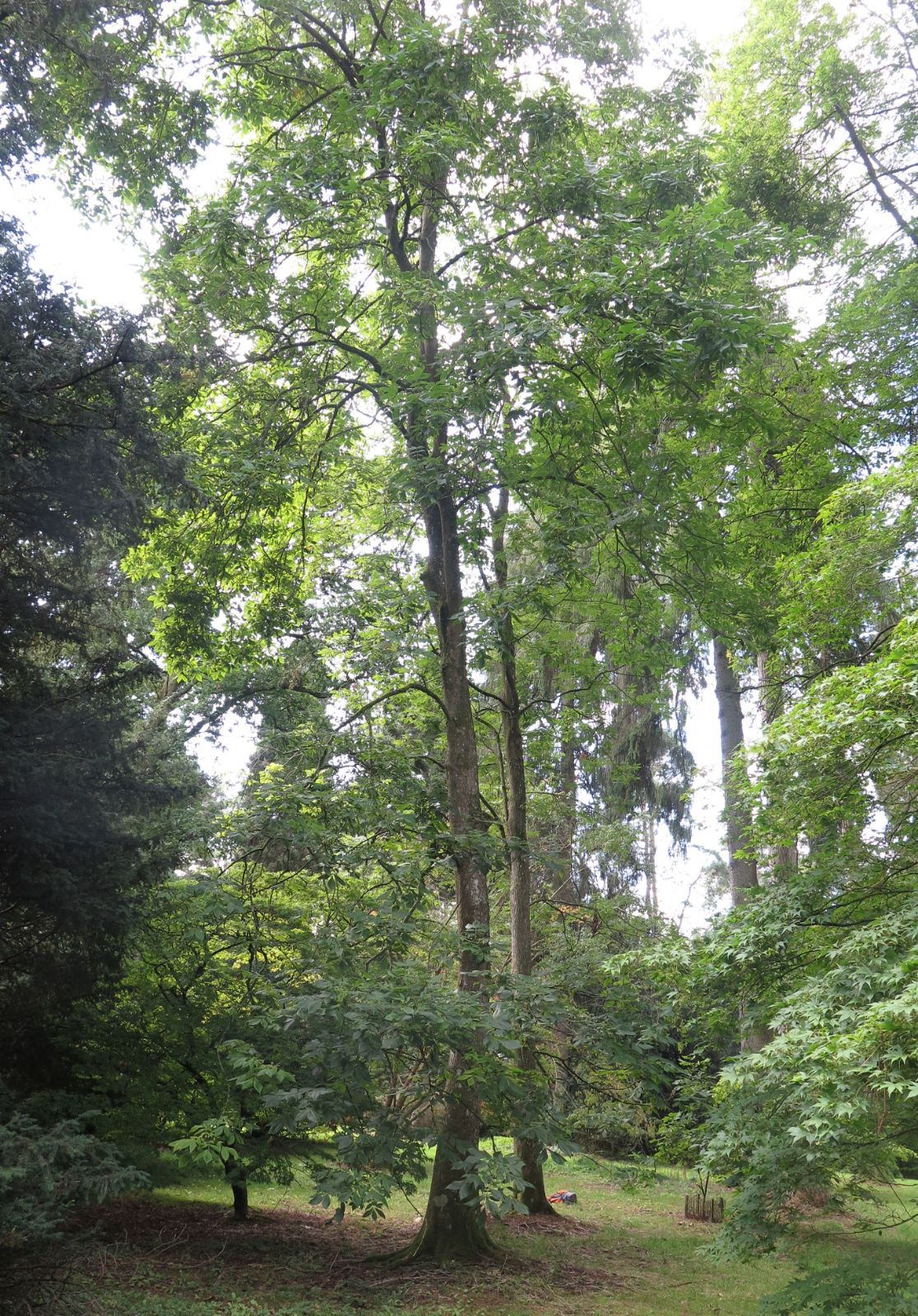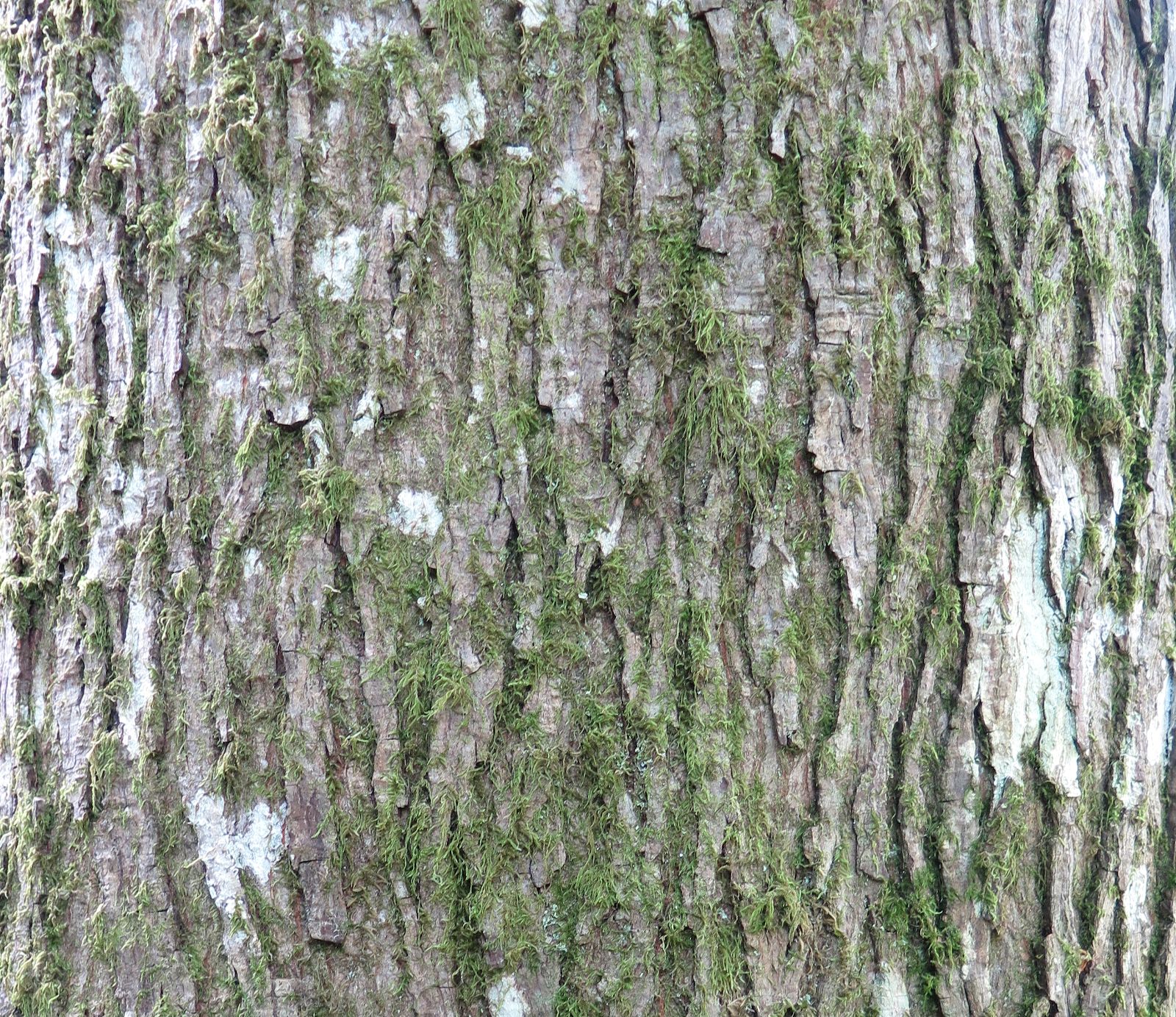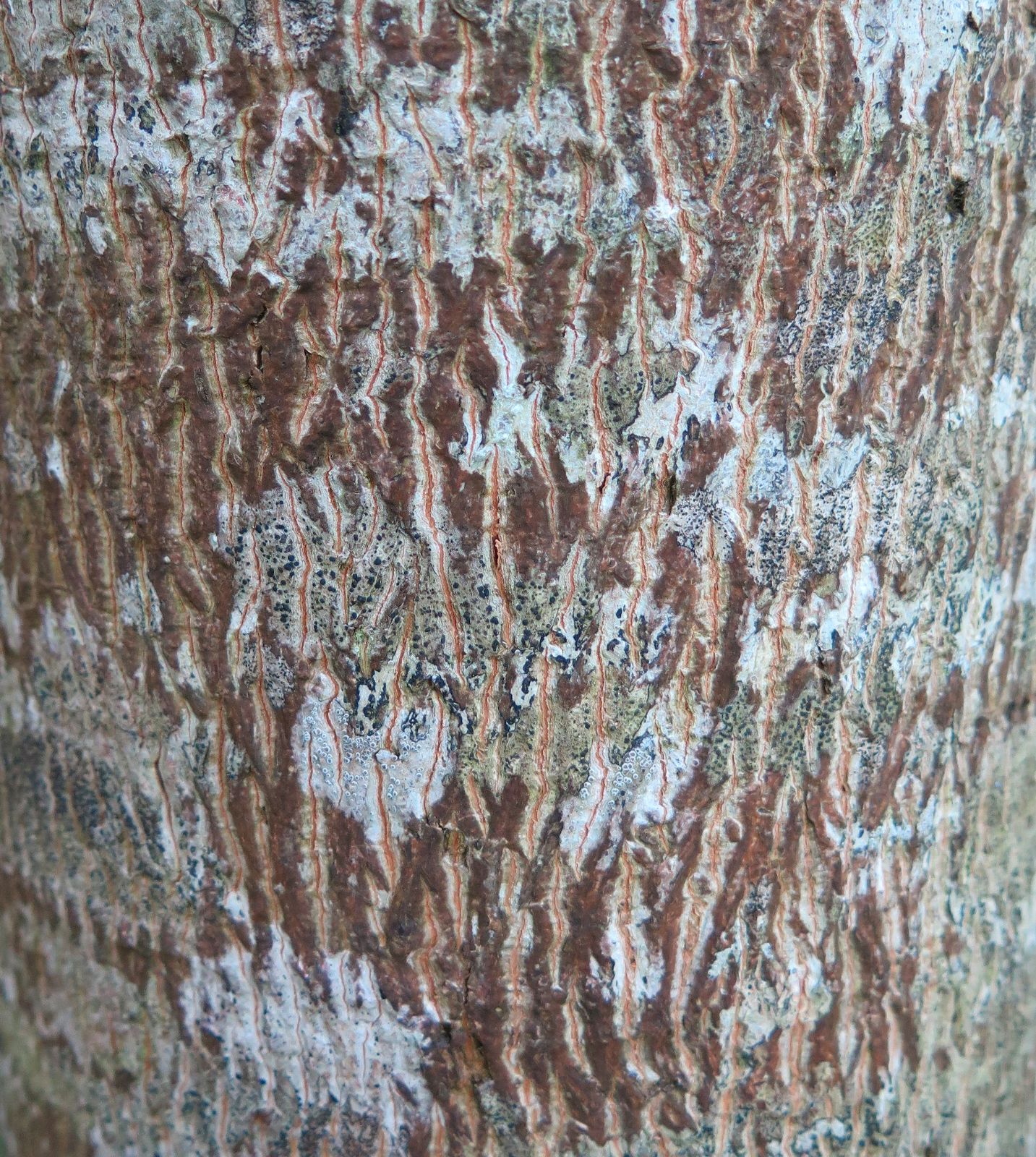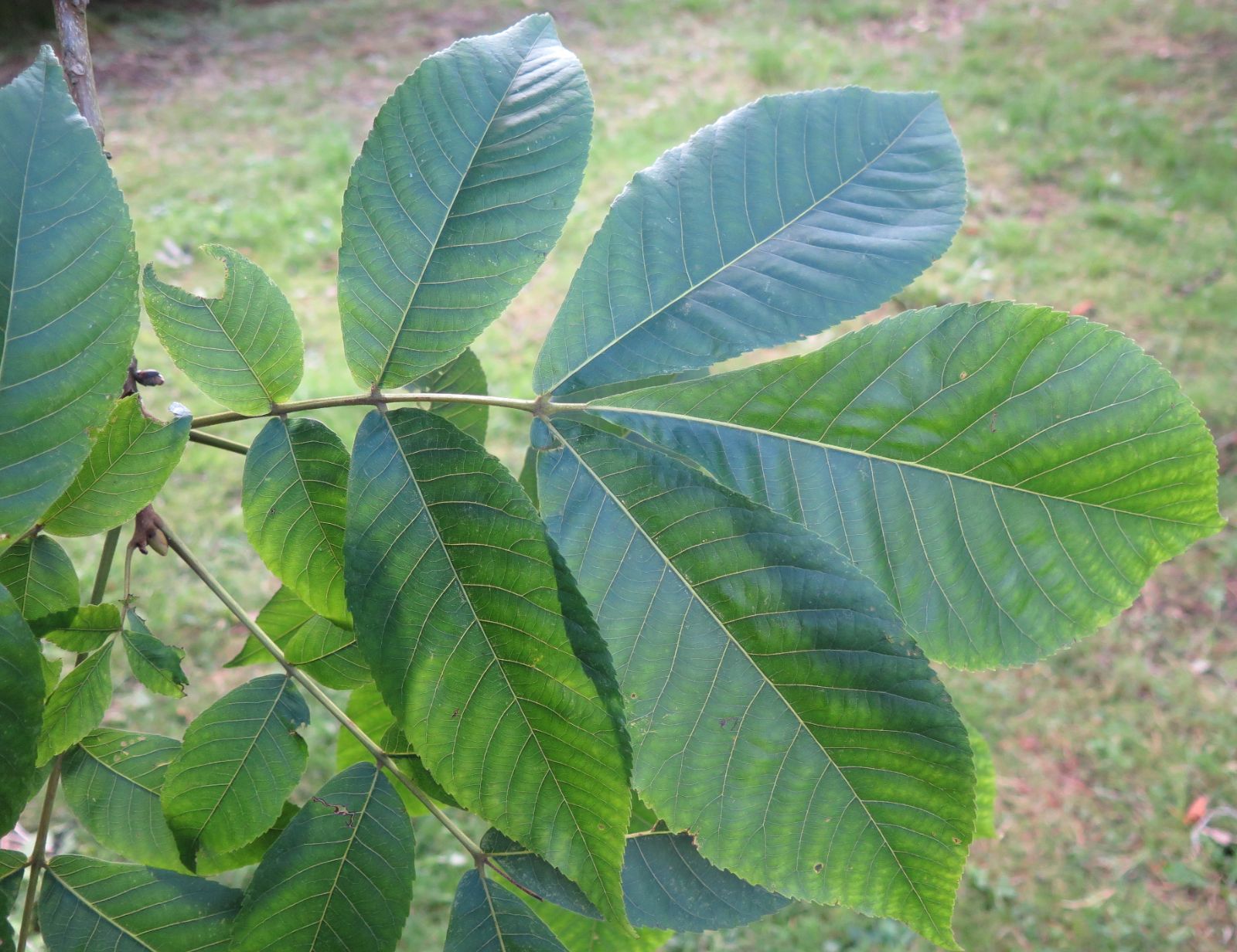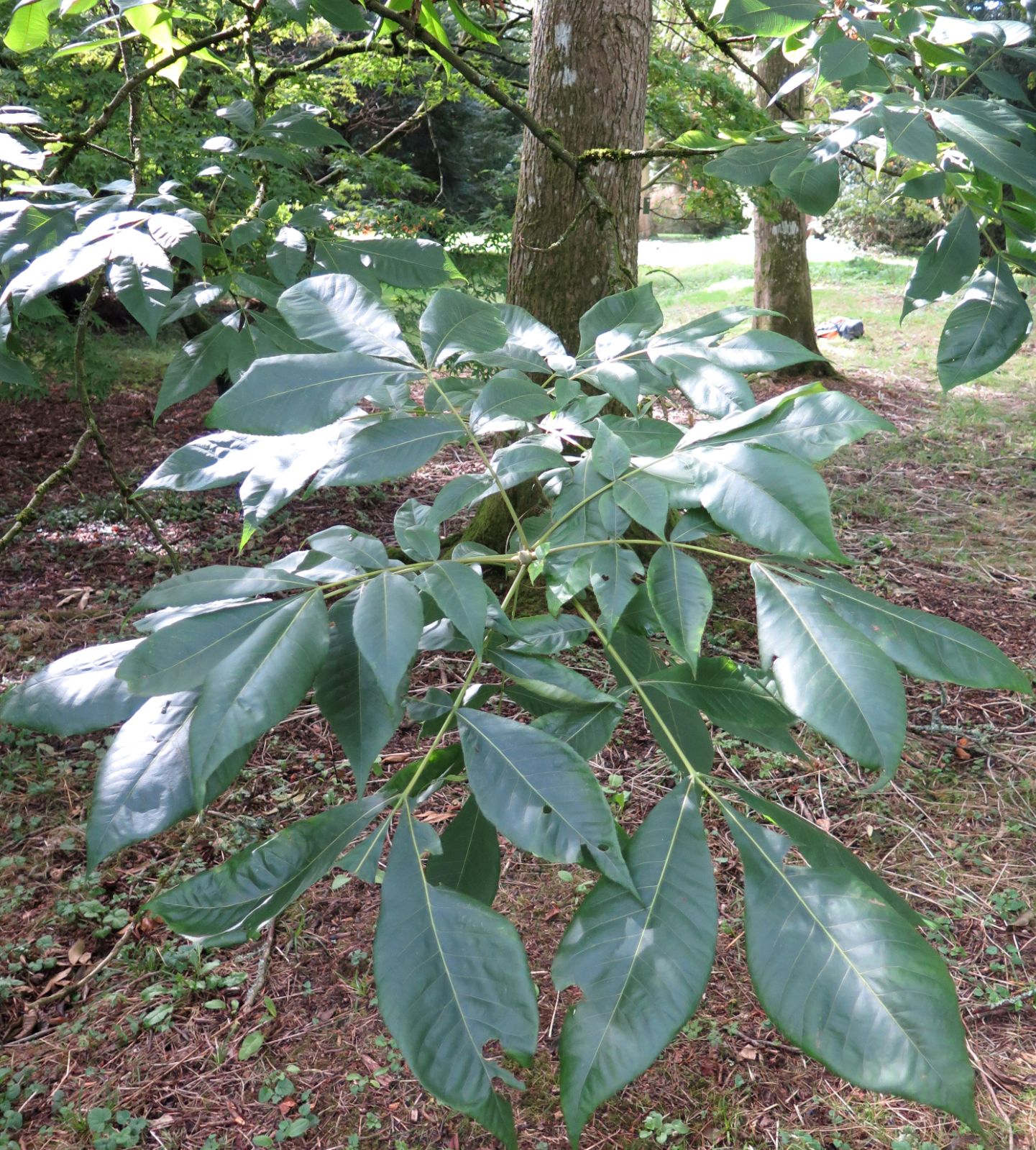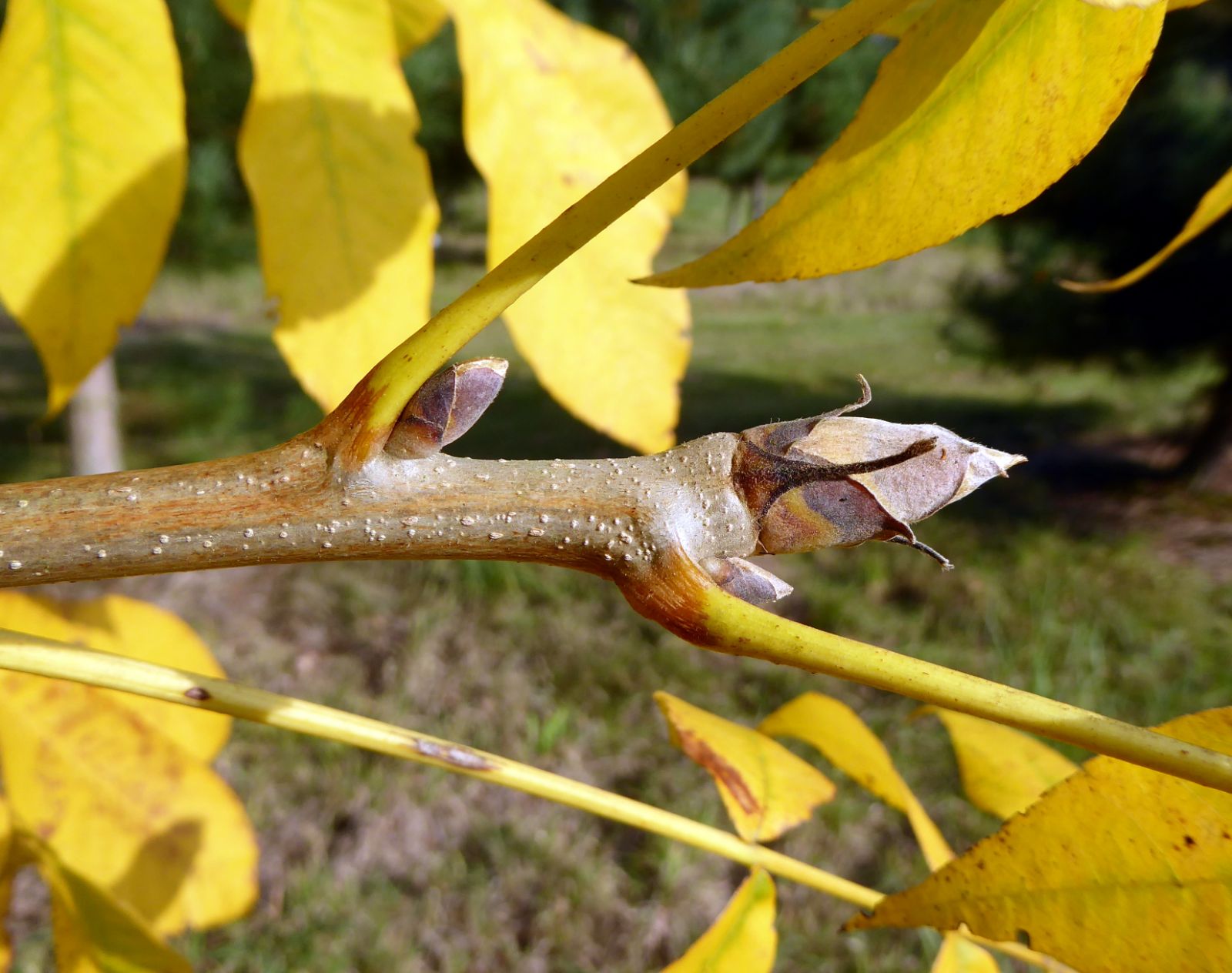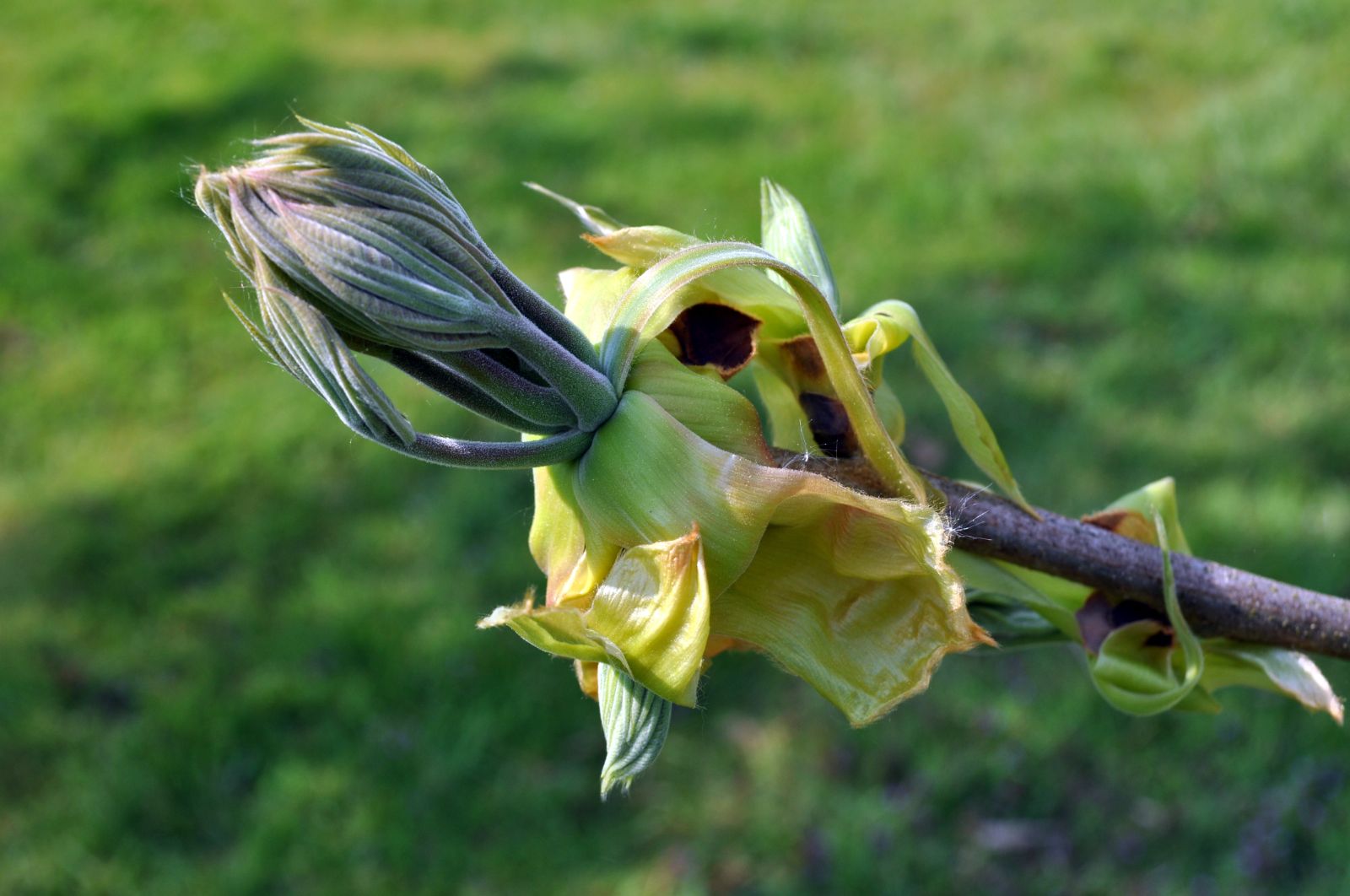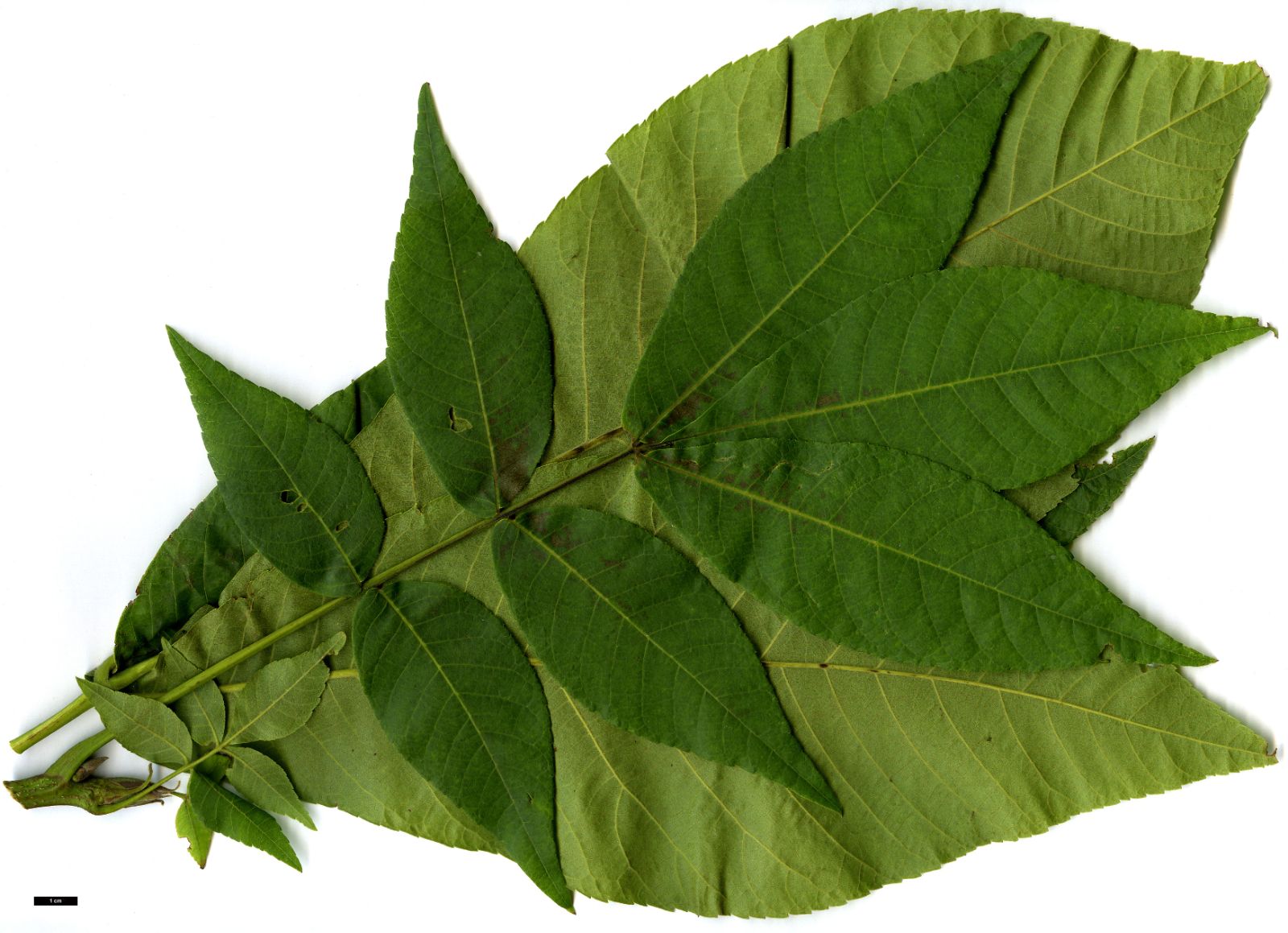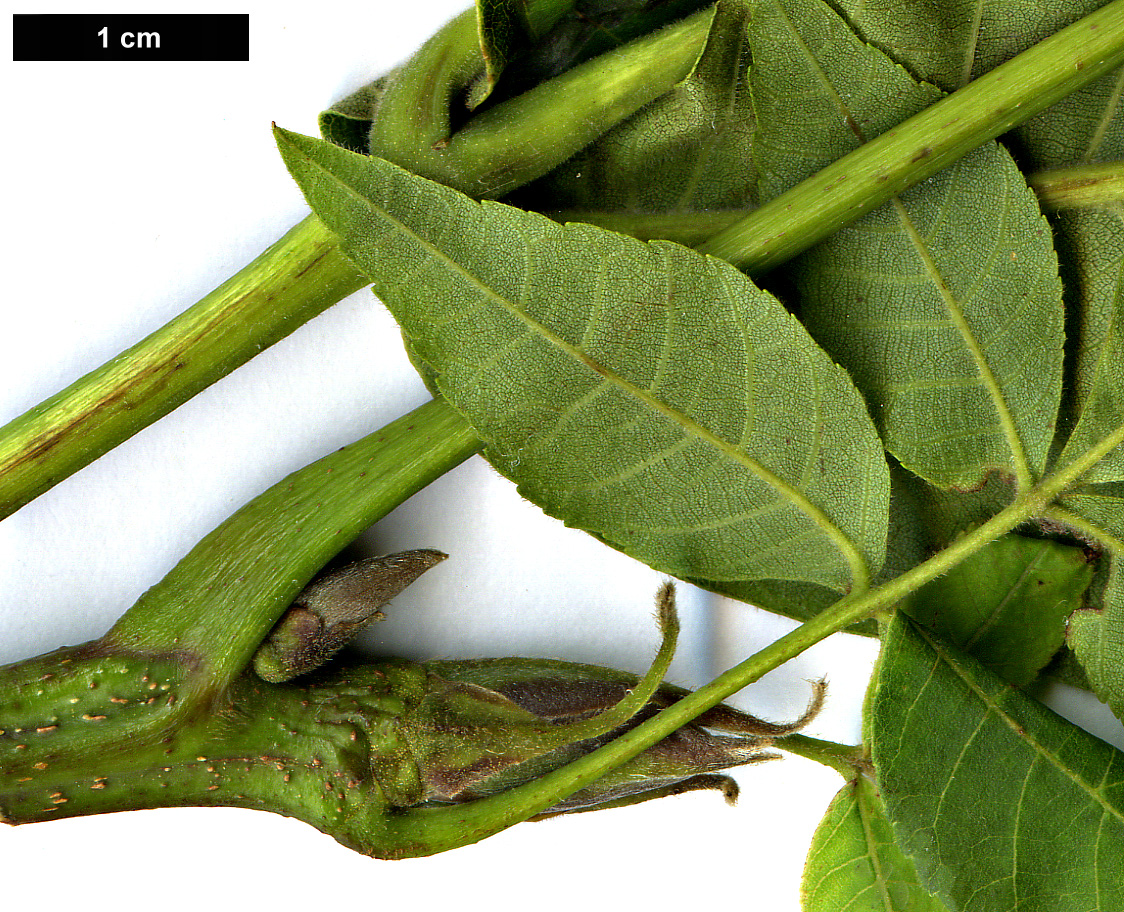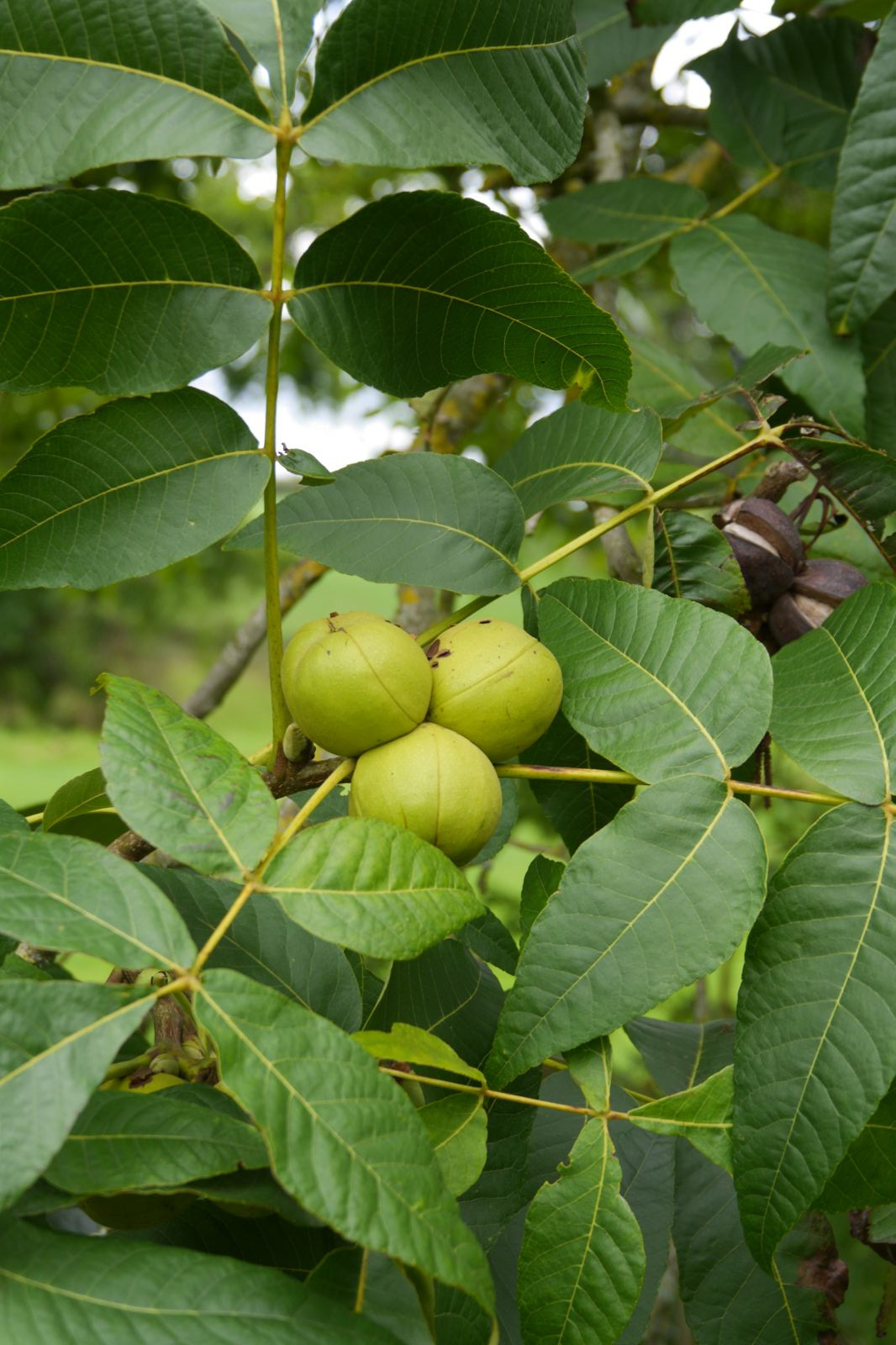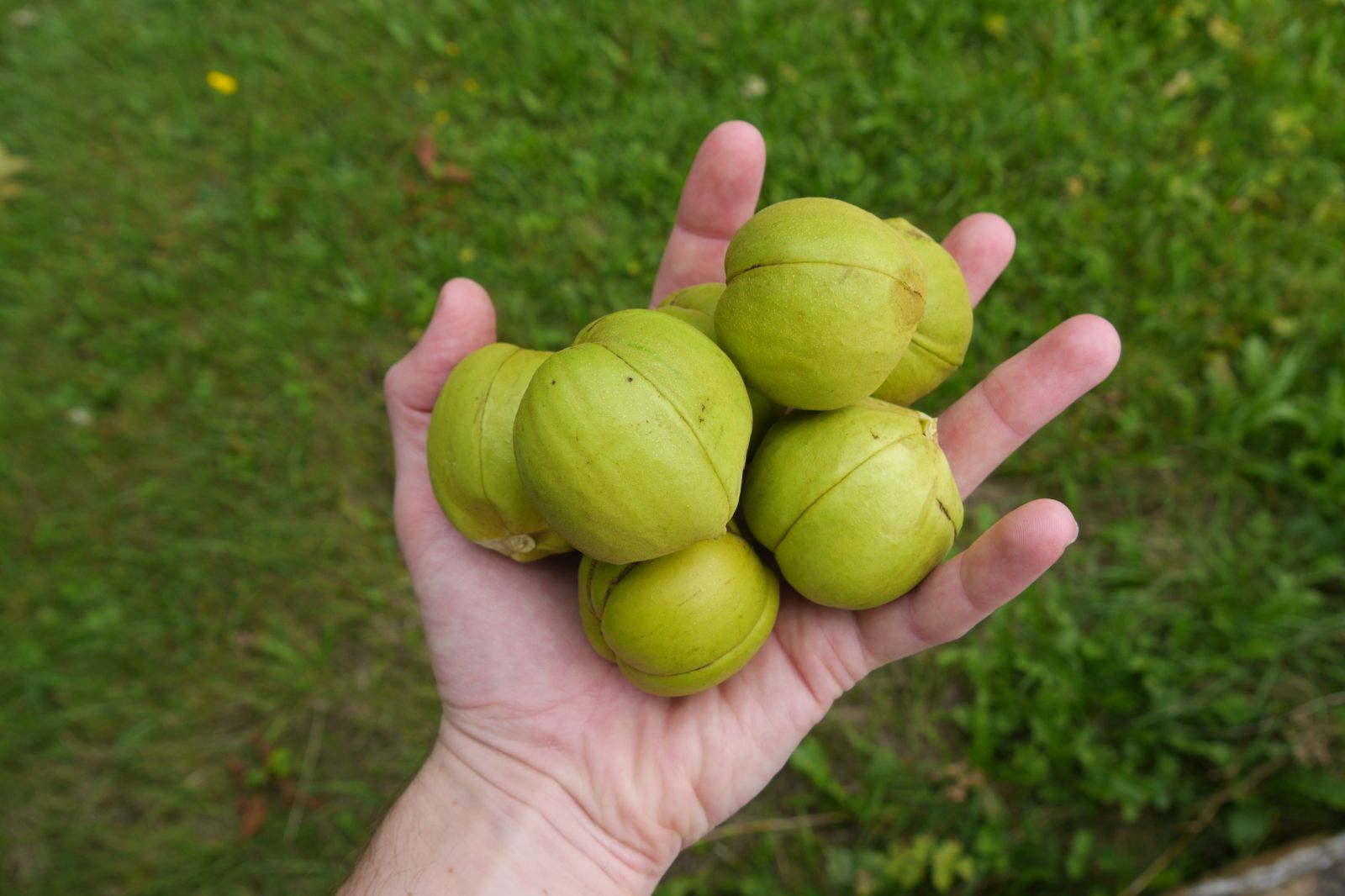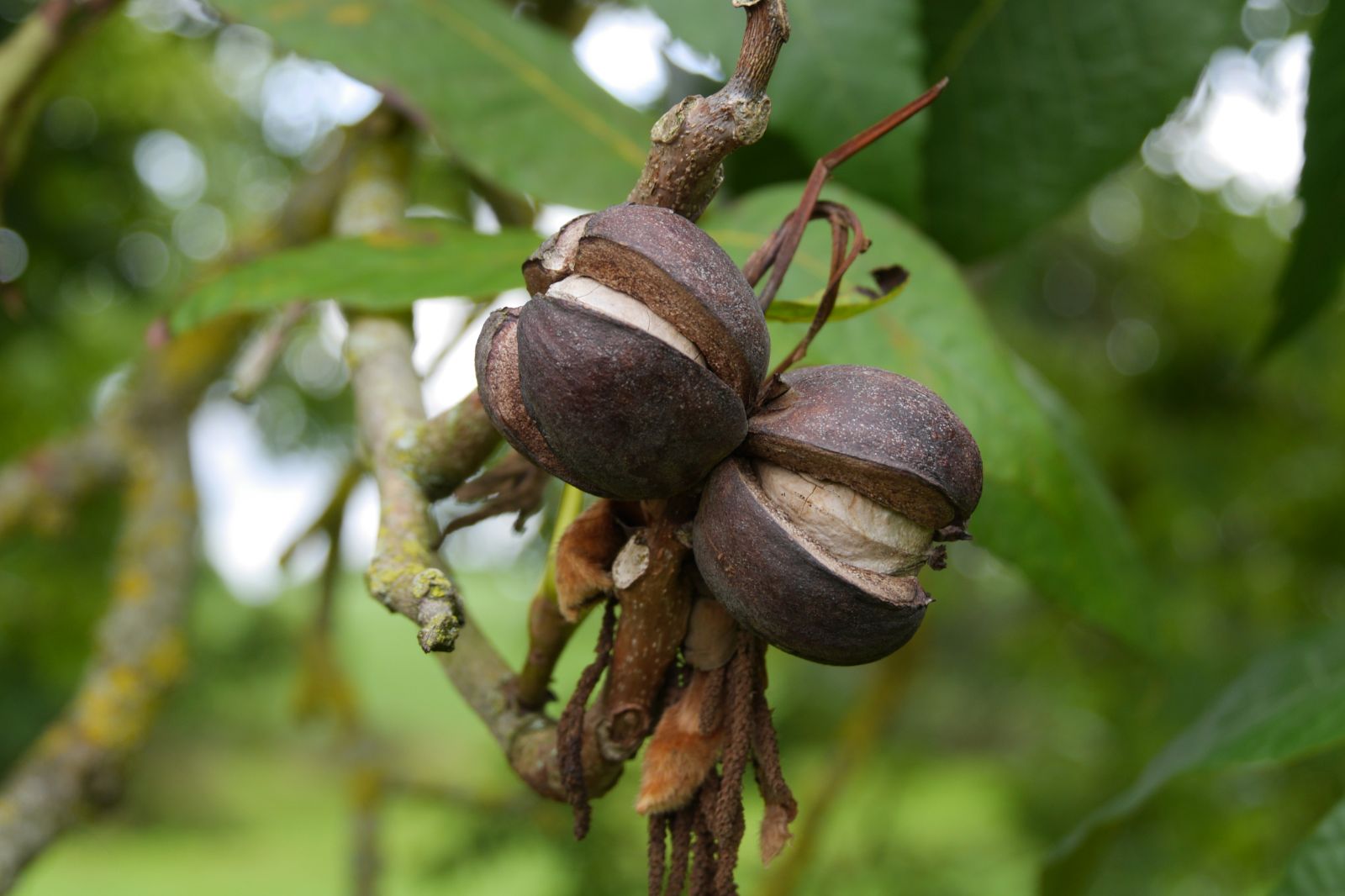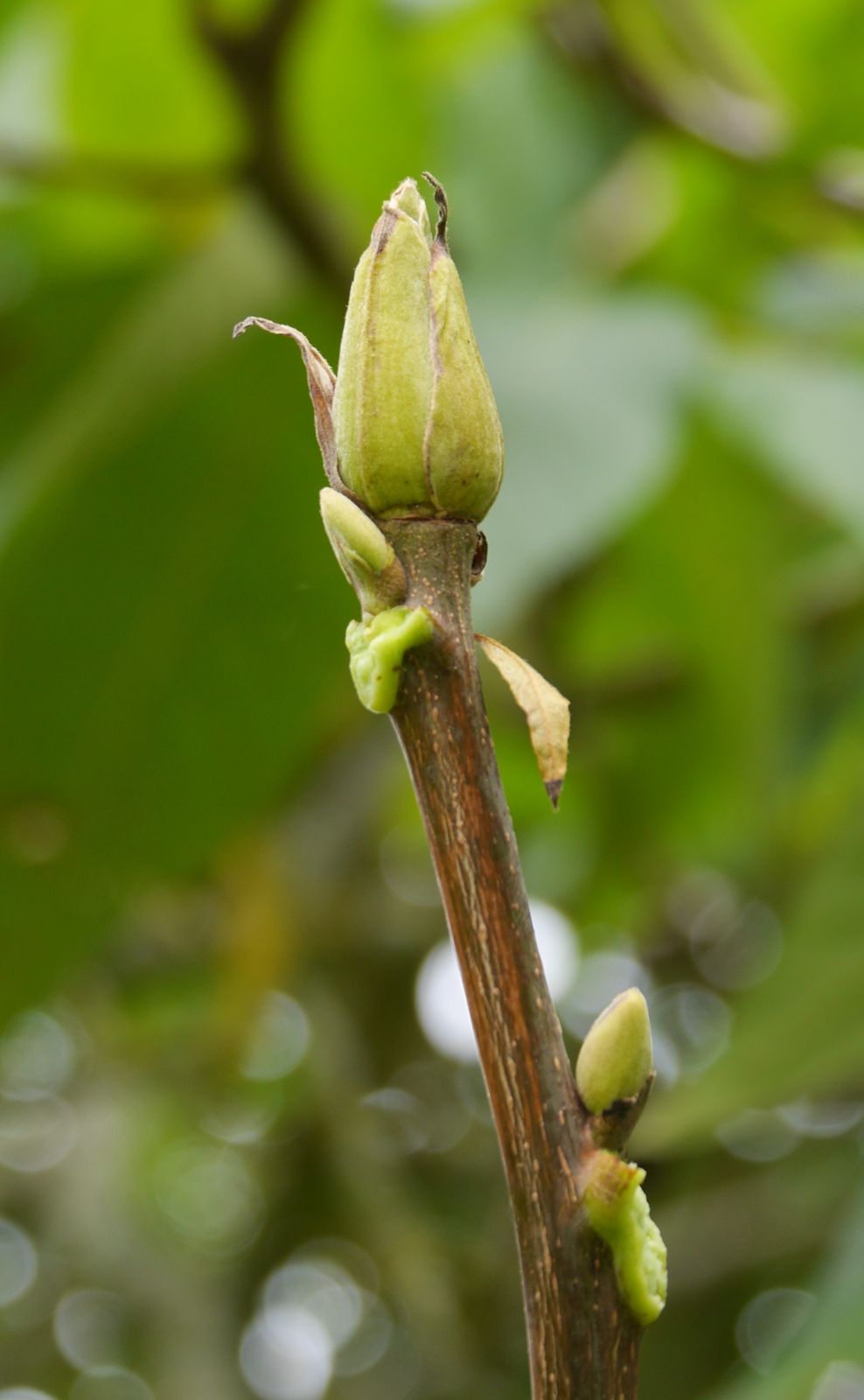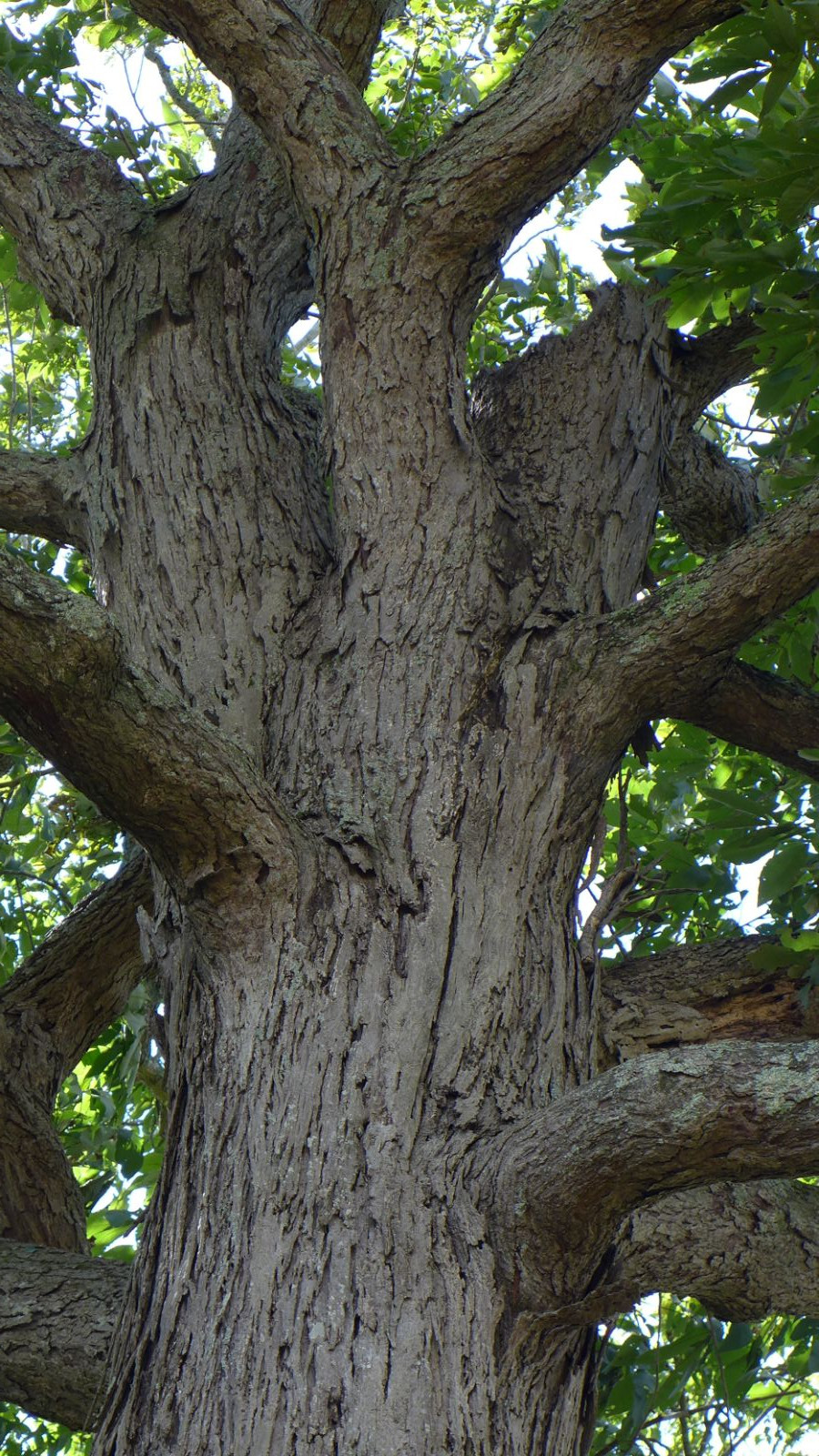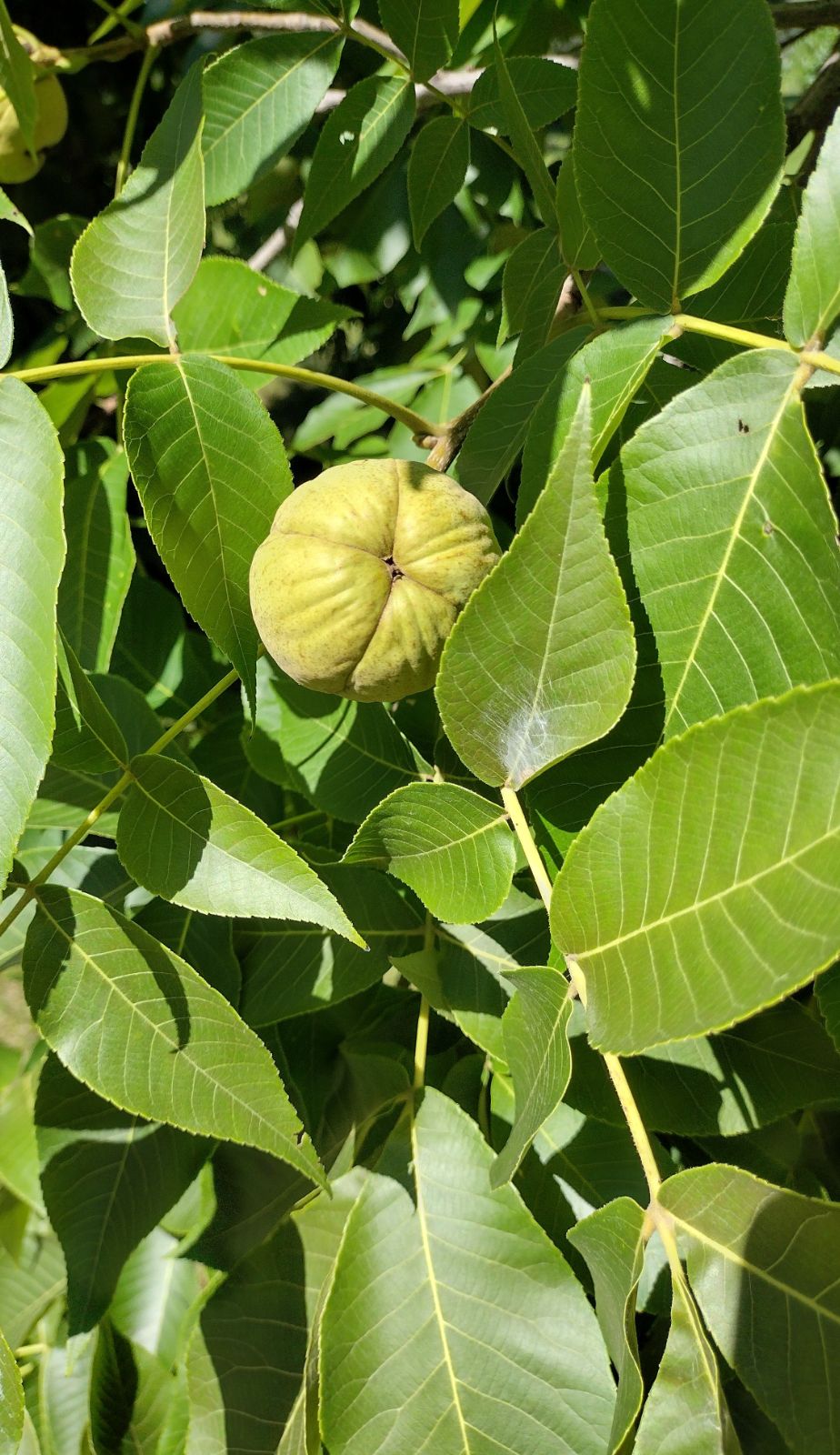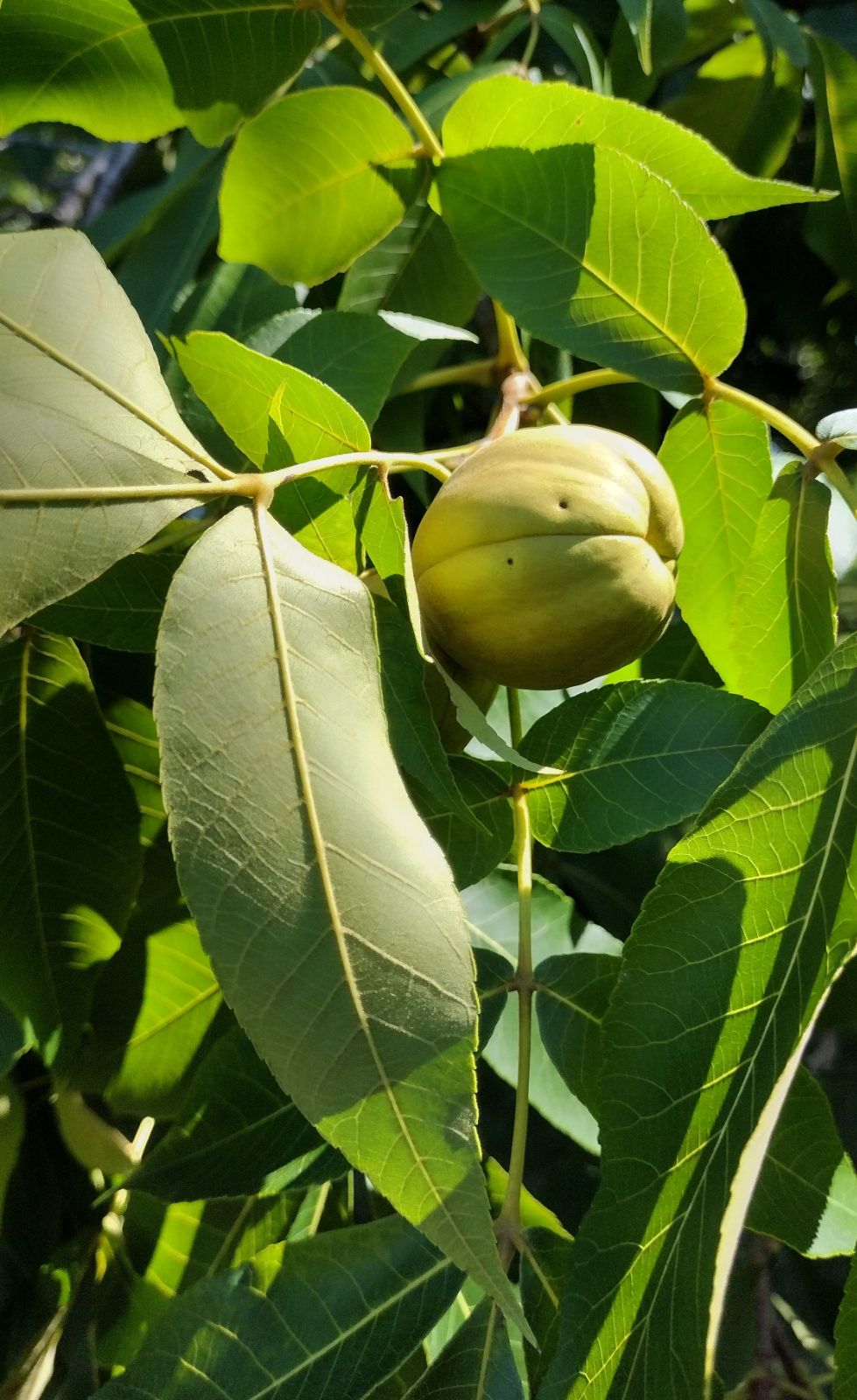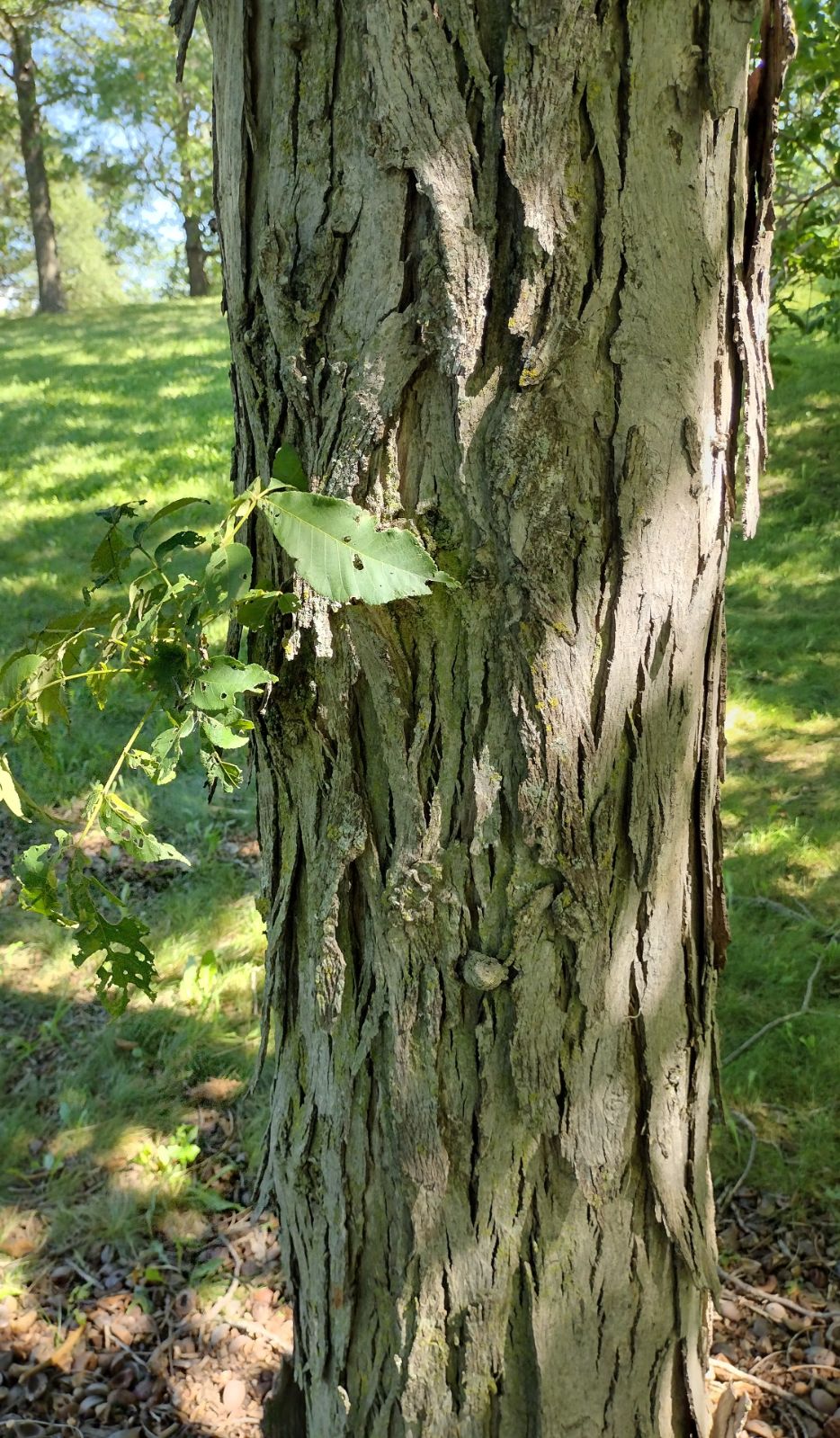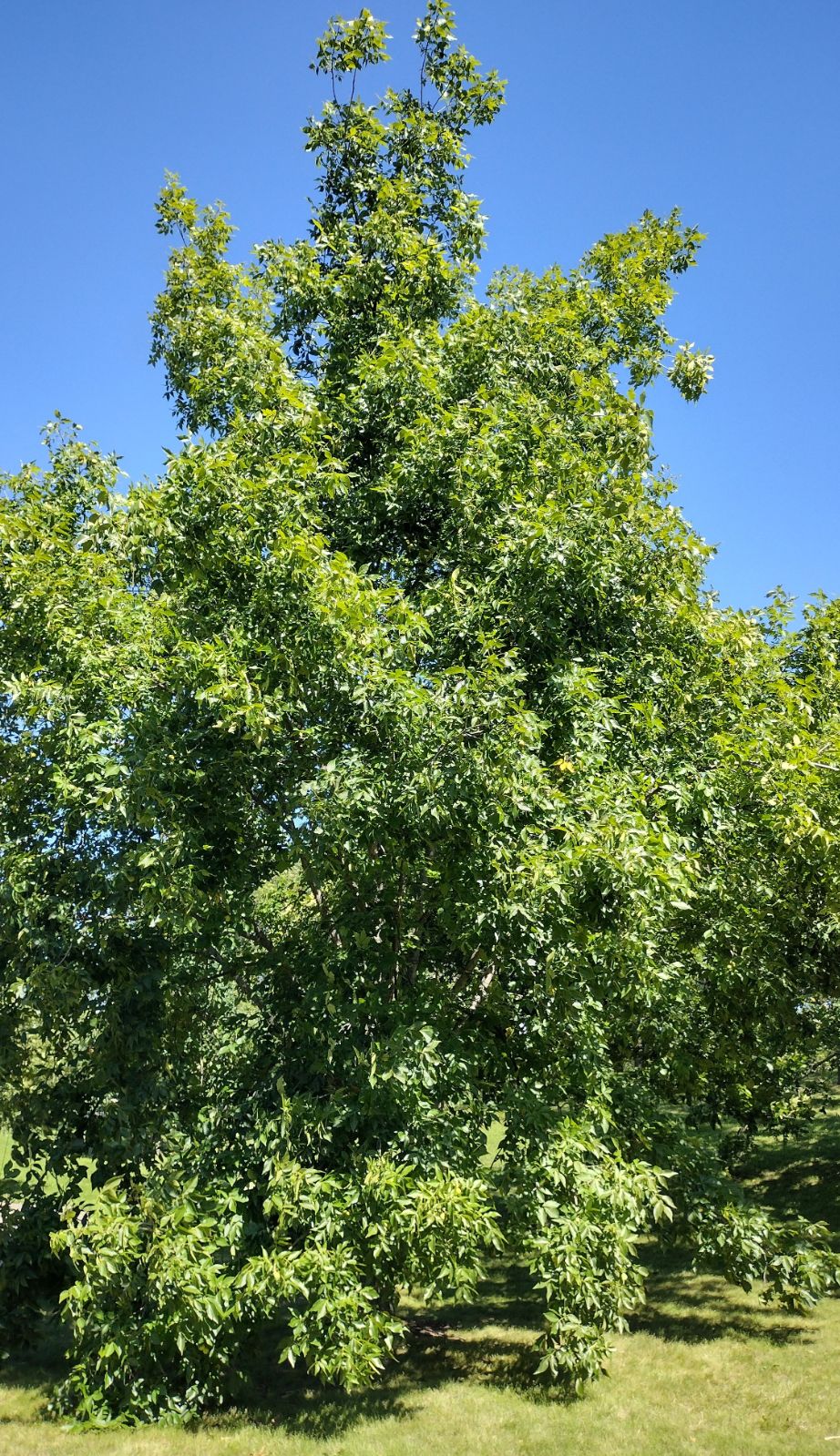Carya laciniosa
Sponsor
Kindly sponsored by
a member of the International Dendrology Society
Credits
Julian Sutton & Dan Crowley (2020)
Recommended citation
Sutton, J. & Crowley, D. (2020), 'Carya laciniosa' from the website Trees and Shrubs Online (treesandshrubsonline.
Large tree to 41 m in the wild. Bark light grey, fissured or exfoliating in large, thick, persisting plates. Branchlets orange to pale brown, stout, hirsute, scaly. Terminal bud, broadly ovoid, 1.2–2.3 cm long, outer scales with longer apices, pale brown. Leaves deciduous, imparipinnate, 30–56 cm long; leaflets (5–)7–9(–11), ovate to obovate or elliptic, 9–20 × 3–10 cm, upper surface hirsute along the midrib and shortly pubescent elsewhere; lower surface hirsute with simple, 2–6-armed hairs, scaly with numerous large peltate scales and small round peltate scales; margins coarsely serrate, apex narrowly acuminate; petiolules 0–0.1 cm long; petiole and rachis sparsely to densely hirsute and scaly; petiole 6–13 cm long. Male catkins to 20 cm long, minutely hirsute, glandular. Fruits pale brown to darker brown, 3–4 × 2–3 cm, globose to ellipsoid, slightly compressed or not, splitting to the base; nuts finely wrinkled. (Bean 1976; Whittemore & Stone 1997; Lance 2004; Whittemore 2013).
Distribution Canada Southern Ontario United States Eastern States; from the Great Lakes south to northern Oklahoma and Tennessee, and from western New York west to Iowa; some outliers exist
Habitat Rich bottomlands, along creeks, and in open cedar glades; 20–300 m.
USDA Hardiness Zone 5-8
RHS Hardiness Rating H5
Conservation status Least concern (LC)
Widely distributed but nowhere common (Schlesinger 1990), the Shellbark Hickory is a bold-textured tree whose leaves, fruits and buds are typically the largest of all hickories. It tends to produce a tall, narrow crown with ascending upper and drooping lower branches. Autumn colour is yellow-brown. Across most of its range it grows in fertile, moist, even periodically flooded ground, in contrast to the Shagbark. Especially in the northern part of its range it can also be found on dry sandy soils, hinting at adaptibility (Grauke 2003; Dirr 2009).
Carya laciniosa rather resembles C. ovata, though usually bigger in its parts and most commonly with seven rather than five leaflets. Leaf rachises often remain attached to the tree in winter. Like C. ovata, the bark separates into loose plates, the origin of the specific epithet, as well as an alternative common name, ‘Big Shagbark Hickory’ (Sternberg 2004). In C. laciniosa ‘shagging’ is usually less pronounced, with the edges of plates less obviously lifting away (Dirr 2009). The stout, orange-tinted branchlets and very thick husks are also distinctive.
This is a useful timber tree, whose strong wood (again, like C. ovata) is used for tool handles and furniture making as well as firewood (Schlesinger 1990). The Cherokee used both wood and bark strips in construction, took various parts of the tree as medicine and ate the nuts (Moerman 2019). The nuts are sweet tasting, though hard to crack and often considered less tasty than Shagbark nuts. They are taken readily by wildlife, especially squirrels. The parent tree of the 2014 collection WECA 32, in Edwin Warner Park, Tennessee, was a stout specimen of 1.2 m dbh, yet by early October only a dozen fruits were left to be collected. A few plantations have been established for nuts and more than forty cultivars named, mostly selected in Iowa or Pennsylvania, and all for their nut rather than timber qualities (Schlesinger 1990; Grauke 2003). It is advisable to plant at least two cultivars together for best pollination. We list a few cultivars suited to colder northern areas which are available from nurseries on both sides of the Atlantic.
Like other true hickories, it is slow to establish. A single seedling raised from WECA 32at Westonbirt Arboretum stood at 70 cm after 4 years in the ground. This tap-rooted species suffers from the usual hickory transplantation issues.
Carya laciniosa was first introduced to the United Kingdom in 1804 (Bean 1976). Though no originals are known, the tree in Tortworth churchyard, Gloucestershire, recorded by Bean (1976) as 10 m tall in 1905 and 20 m tall in 1964 remains in good health, if partially ivy-covered. A larger example grows in the less managed valley just north of the neighbouring Tortworth Court Hotel, although the tallest example in the United Kingdom grows in Aldenham Woods, Hertfordshire (28.5 m × 43 cm, 2018 – The Tree Register 2019). There are several large and beautiful specimens at Westonbirt Arboretum, where they can be compared with other accurately named species.
In continental Europe Shellbark has been less widely planted than Shagbark, although it is widely hardy. There is a splendid specimen in the Hortus Botanicus Amsterdam, planted in 1912 (monumentaltrees.com 2019). Well to the east is a group planted at the Kórnik Arboretum in western Poland around 1873, which had reached maximum dimensions of 29 m in height and 51 cm in diameter by 2018 (Rudawska et al. 2018). Outside its native American range, it is well-suited to the Pacific Northwest, where two specimens planted in 1928 can be seen at the Hoyt Arboretum, Portland, Oregon (Hoyt Arboretum 2019).
'Fayette'
An annually cropping variety suitable for colder northern areas, selected in 1932 by Fayette Etter of Franklin County, Pennsylvania. It has big, walnut-sized nuts with large kernels and hard but easily cracked shells. (Crawford 2016; Grauke 2019; Grimo Nut Nursery 2019; De Smallekamp 2019).
'Henry'
Like ‘Fayette’, this is an annually productive variety suitable for colder northern areas, with very large, well-filled nuts which crack relatively well. Again like ‘Fayette’ it was selected by Fayette Etter of Franklin County, Pennsylvania. It is however a late-ripening variety, whose nuts tend to be retained in the husk (Crawford 2016; Grauke 2019; Grimo Nut Nursery 2019; De Smallekamp 2019).
'Keystone'
An annually cropping, usually highly productive variety. The nuts are very large, tend to fall free of the husk and are unusually thin shelled, making them one of the easiest Shellbarks to crack. Selected in 1954 by Fayette Etter of Franklin County, Pennsylvania (Crawford 2016; Grauke 2019; Grimo Nut Nursery 2019).
'Missouri Mammoth'
Further information is needed about the origins of this selection; examples grow at the Minnesota Landscape Arboretum. Grauke (2019) and Crawford (2016) mention a cultivar ‘Engeman’ with the synonym ‘Missouri Giant’ – could they be the same?

